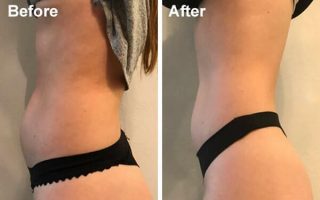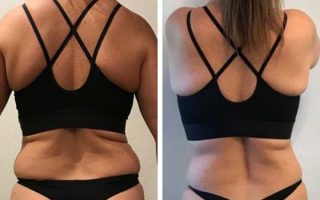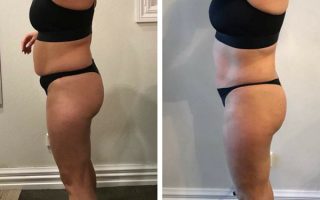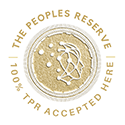Cryolipolysis – Fat Freezing
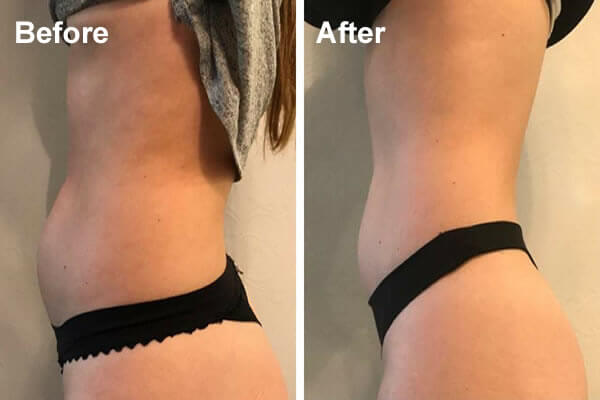
Cryolipolysis, more commonly referred to as "fat freezing", uses controlled cooling to freeze the targeted fat cells.
Over time these frozen cells are flushed out by the body's normal metabolic processes.
Surrounding tissues are left unharmed. Once these fat cells are gone they will not reappear.
Here are some of the most frequently asked questions about the various Ice Lipo treatments. If the answer to your question is not here, please get in touch.
General FAQs
General Questions
Am I a good candidate for these procedures?
These procedures are not designed to replace normal weight loss programmes. A suitable candidate is someone who is within 10-15% of their ideal weight and is looking for spot fat reduction in specific areas.
I have loose abdominal skin and fat; is this the right treatment for me?
Cryolipolysis fat freezing will not tighten loose or stretched skin. If, therefore, you have already lost a lot of weight through diet or surgery, you’ll probably need more invasive procedures such as tummy tuck to get rid of the hanging fat or folds and therefore fat freezing is possibly not for you. Ultrasonic cavitation and/or Radio frequency may be an alternative which can be discussed at your consultation.
Who is not a suitable candidate for Cryolipolysis?
People with the following conditions are NOT suitable candidates:
- Active implanted medical devices
- Chilblains
- Cold agglutinin disease
- Cryoglobulinemia, a disorder where proteins increase in response to cold
- Hernia, or history of hernia, within the treatment area
- Long term use of blood thinners or bleeding conditions that thin the blood
- Nerve conditions such as diabetic neuropathy
- Paroxysmal cold hemoglobinuria
- Pregnancy, attempting to become pregnant and breast feeding
- Raynaund’s disease
- Reduced circulation or skin sensation in the treatment area
- Severe anxiety disorders
- Skin conditions such as Eczema and psoriasis or injury and scar tissue within the treatment area
Other concerns may be discussed at your consultation. A doctors clearance may be required.
Is the technique safe?
Yes. It is approved by the FDA and has no nasty side effects
Does everyone have a guaranteed and successful result?
The technology of the machine and the effects are well proven. However, the treatment does not end when the cups come off; it is your responsibility to ensure success by following the aftercare instructions given to you.
Fat Freezing
Fat Freezing Questions
What is Cryolipolysis fat freezing?
The ICE LIPO fat freezing procedure is a non-invasive way to gently and effectively reduce the fatty contents of targeted stubborn areas of your body such as the stomach, love-handles and back, resulting in an enhancement in the treated areas. Being totally non-invasive, this means there are no needles, scalpels or incisions required. Furthermore there is no need for anaesthesia or pain relief. Effectively, there is no down or recovery time.
What is the principle behind Cryolipolysis?
The principle behind Cryolipolysis is the breakdown of fat cells by literally freezing them. Because the fat cells freeze at a higher temperature than the surrounding cells, the fat cells are frozen before the surrounding tissues can be affected. The machine precisely controls the temperature so no collateral damage is done. Once frozen, the cells will eventually be flushed out by the body’s normal metabolism processes.
How does Cryolipolysis differ from other fat reduction techniques?
Cryolipolysis is non-surgical liposuction. It is painless. There is no downtime or recovery time, no wounds or scars.
Is Cryolipolysis a new concept?
The science behind cryolipolysis is not new. It was inspired by the observation that children who habitually sucked on popsicles developed cheek dimples. It was here that it was noted that this was due to a localised inflammatory process that was occurring within the fat cells due to the freezing. Ultimately this leads to the destruction of the fat cells in the cheek area and is the cause of dimpling. Interestingly children can reproduce fat cells whereas adults can not.
What exactly happens during the treatment?
During the procedure your practitioner will identify the fatty area to be treated and cover it with a cool gel pad to protect the skin. A large cup-like applicator will then be placed over the treatment area. A vacuum is then applied through this cup, ultimately sucking in the roll of fat to be treated. You will feel a firm pulling sensation, similar to the application of a vacuum seal and you may feel mild cold in this area. In the first ten minutes the temperature inside the cup will gradually lower until it reaches the operating temperature of -7 or -8 degrees Celcius; in this way the fat cells within the cup area are frozen. The cup applicator will remain in place for up to 30 minutes.
Does fat freezing hurt?
Fat freezing is comfortable for most clients. Although in the first 5 minutes some clients will describe the initial cooling and suction as mildly uncomfortable, the majority find it quite tolerable. No anaesthesia or pain relief is therefore needed and typically clients are comfortable enough to read, listen to music, relax, etc.
How long does the procedure take?
One treatment area takes 30 to 60 minutes with little or no downtime in most cases. Multiple treatments are normally required to achieve satisfactory results. There are two applicators so two areas – e.g. love handles – can be treated symultaneously.
What happens after the treatment?
When the cup applicators are removed you may experience a slight burning sensation as the temperature in that region returns to normal. You will notice that the area is slightly deformed and possibly bruised, the consequence of being sucked and frozen. Your practitioner will massage this back into a more normal appearance. Any redness will settle in the following minutes/hours while localized bruising will clear within a few weeks. You may also experience a temporary dulling of sensation or a numbness lasting 1 to 8 weeks.
What are the side effects or complications?
The freezing of fat to reduce volume has been proved to be a safe procedure and is not associated with any long term side effects. There is always enough fat still present to buffer and smoothen the outer edges of a treated area.
How long before I notice results?
Some people tell of being able to feel or see a difference as early as a week after treatment however this is unusual. Before photos are always taken to refer back to and track your progress
Which areas are suitable for fat freezing?
Typical target areas include:
- Abdomen – upper
- Abdomen – lower
- Arms - upper
- Back – bra strap area
- Buttocks – saddlebags
- Buttocks – banana rolls
- Flanks – love handles
- Hips: muffin tops
- Knees
- Man Boobs
- Stomach
- Thighs – inner
- Thighs – outer
- Waist
How much of an improvement can I expect?
Results are individual please see before and after images
What is the recovery time?
There is no downtime or recovery time. You can return to your normal activities immediately
How many sessions are required?
The average healthy body will require 3-4 treatments at 4-6 week intervals
How long do the effects last and will the fat return?
Once the fat cells have been destroyed they are gone for good. Only children can regenerate fat cells
Does Cryolipolysis treat cellulite?
Partly, but is augmented by the RF skin tightening procedure.
AFTERCARE
Your aftercare will be thoroughly explained at your treatment session but an intake of 3 litres of water daily whilst in a treatment programme is required.
Are you a Beauty Salon Owner, Beauty Therapist or Health Appearance Specialistwho would like to offer non-surgical body sculpting treatments to your clients?
We can help you.
We provide a Cryolipolysis Fat Freezing machine
and the training needed to use it safely and effectively.
021 438 511 | 78 Maxwell Road, Blenheim 7201 | heidisilk@xtra.co.nz
© 2019 - 2025 Ice Lipo NZ

